
|
|
|
|
|
The Year 2012
The year 2012 was again another great year with many successes. The year started with a num- ber of visits to Ramstein Air
Base in Germany. A few nice visits to the German airbase Geilen- kirchen and the Belgian airbase Florennes were on the
program during spring. I finally captured the B-2 Spirit on photo at Fairford after 10 years of hunting for it. The absolute
highlight of the year 2012 and even of my whole existence as a spotter was the visit to Zhukovsky in Russia. Also, Serbia was
visited this year; this country was already for a long time on my which list. My trip to Graf-Ignatievo in Bulgaria in October
was a worthy end of the fantastic year 2012.
|
|
|
|
|
|
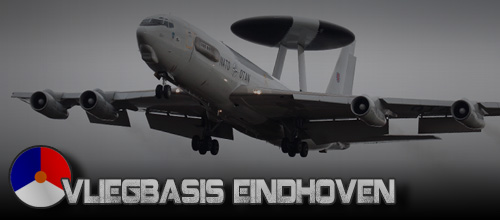
|
|
Military Movements Eindhoven
Eindhoven Air Base in 2012; Eindhoven, 2012
The first pictures of the year 2012 which I took were made at Eindhoven Air Base. In January I was able to photograph
an American C-21 from Ramstein Air Base and a Dornier Do-228 of the Dutch Coast Guard. During the second visit at the
beginning of February, I took a few excellent photos of a KDC-10 with a heavy snow storm in the background. This
particular lighting situation brought me some great photos. At the beginning of March, a Spanish Navy Cessna 560 was
scheduled to Eindhoven. This was an exotic visitor at the airbase.
|
|
|
|
|
Ramstein, Hub of the AMC, Part I
The Civil Reserve Air Fleet; Ramstein AB, March 16 – 20, 2012
Many civil aircraft movements can be seen besides the military move- ments at Ramstein Air Base. The Civil Reserve
Air Fleet (CRAF) was created after the Berlin Airlift in 1952. The goal of the CRAF is to support the USAF with
its duties when needed. The CRAF is the civilian backup for the USAF in times of crisis and war. The CRAF was
established as a result of the Berlin Airlift. The civilian fleet consists of 3 segments, namely; the international
fleet, the national fleet and the MEDEVAC fleet. The civilian aircraft are continuously available.
|
|
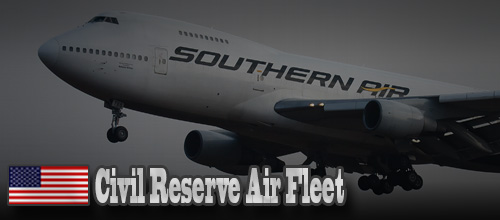
|
|
|
|
|
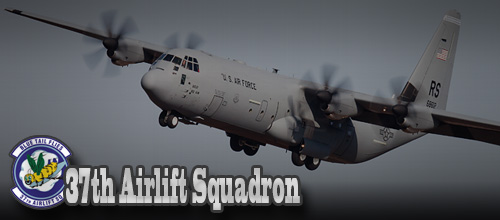
|
|
Ramstein, Hub of the AMC, Part II
The Hercules of the 37th AS, Ramstein AB, March 16 - 20, 2012
The C-130 Hercules is the workhorse of the USAF. The aircraft is based at Ramstein Air Base since 1994. The C-130
is here assigned to the 37th Airlift Squadron. The Hercules is used for the medium and heavy transport task within
the USAF since the 50s. The 37 AS has 14 Hercules aircraft at Ramstein Air Base. In November 2009, the 37 AS
exchanged its last C-130E Hercules for the newer C-130J-30 Super Hercules. The Hercules aircraft at Ramstein are
of the type C-130J-30. The Hercules is a lot longer than the original design of the Hercules.
|
|
|
|
|
Ramstein, Hub of the AMC, Part III
The C-21A Learjet of the 76th AS, Ramstein AB, March 16 - 20, 2012
In addition to the aircraft of the Air Mobility Command (AMC), also many C-21A Learjets of the 76th Airlift
Squadron can be seen at Ramstein Air Base. The 76 AS is based at Ramstein Air Base and has several types of
aircraft in service, such as; the C-20, the C-21 and the C-37. Let us have a closer look at the C-21A Learjet.
The C-21A is the military version of the Learjet 35A. The aircraft is made for the transport of passenger and
light goods. The delivery of the C-21A fleet began in April 1984, and was completed in October 1985.
|
|
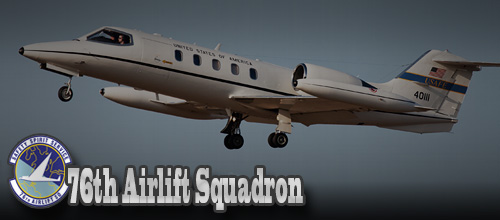
|
|
|
|
|
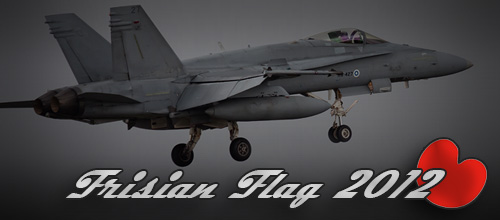
|
|
International Exercise Frisian Flag
The Biggest Annual Dutch Exercise; Leeuwarden, April 24, 2012
The international exercise Frisian Flag took place at Leeuwarden Air Base from Monday, April 16, 2012, until
Friday, April 27, 2012. A total of 8 different countries will participate in this massive Dutch exercise.
These countries, are; Belgium, Germany, Finland, Great Britain, The Netherlands, Norway, Poland and Sweden.
The exercise is organized by the no 323 TACTESS Squadron from Leeuwarden Air Base. The air defense part of the
exercise is performed over the North Sea. The Vliehors Shooting Range on Vlieland is used for the air to ground
part.
|
|
|
|
|
30 Years Boeing E-3A Sentry
Airborne Warning And Control System; Geilenkirchen, June 15, 2012
The E-3A Sentry, also known as the AWACS (Airborne Warning And Control System), is 30 years in service within the NATO.
The aircraft is based on the Boeing 707. The aircraft is used as all-weather control and communications command post
in the air. An open house is or- ganized at Geilenkirchen to celebrate this event on June 16, and June 17, 2012. I was
present at the spotter day during the arrival of the air- craft for this small open house. There was heavy rain from time
to time. Conditions became a little bit better in the afternoon.
|
|
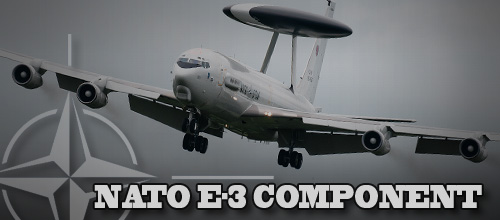
|
|
|
|
|
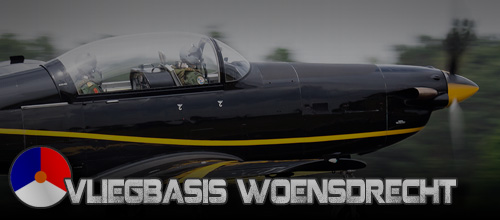
|
|
Spotter Day at Woensdrecht Air Base
Exercise Joint Medical Modules; Woensdrecht, June 19, 2012
A spotter day at Woensdrecht Air Base was on the program in the af- ternoon of Tuesday, June 19, 2012. The exercise
Joint Medical Modu- les was ongoing during the spotter day. This medical evacuation exer- cise was conducted at
Woensdrecht Air Base by Dutch and Belgian troops from the air force and the army. The two countries train evacua- ting
casualties from a crisis area during war. Transport helicopters of the Dutch Defense Helicopter Command and the
Belgian Helicopter Wing are used to transport the wounded soldiers.
|
|
|
|
|
The Florennes Airshow 2012, part 1
Spotter Day during the Arrivals; Florennes, June 22 – 25, 2012
This year the Belgian airbase Florennes will celebrate its 70th anni- versary. The Belgian Air Force decided to organize
a big airshow to celebrate this anniversary. The airshow was held on June 23 and 24, 2012. I was present during the spotter
days during the arrivals day and the departures day on June 22 and 25, 2012. The first spotter day took place on Friday,
June 22. The organization of the no 2 Tactical Wing at Florennes had 1,200 seats available for photographers. Most of
the airshow arrivals for the Florennes airshow would occur today.
|
|
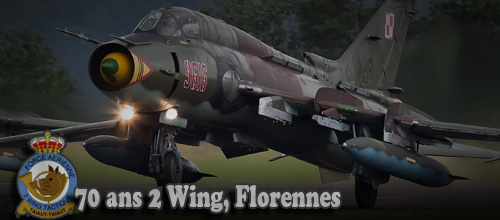
|
|
|
|
|
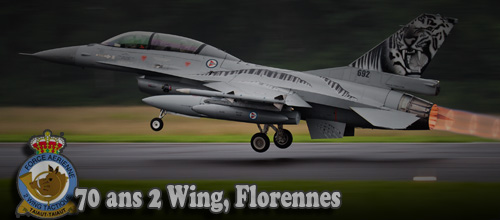
|
|
The Florennes Airshow 2012, part 2
Spotter Day during the Departures; Florennes, June 22 – 25, 2012
The spotter day during the departures was on the program on Monday June 25, 2012, after the airshow which took place
during the weekend. I was also present at this spotter day during the departures of the air- show participants. These
departures promised to be a true spectacle with the necessary action photos. The weather looked a lot worse than last
Friday. he advantage of dark and grey weather is the fact that after burners looks very spectacular during take-off.
After 2 well organized days I went home with a collection of beautiful photos.
|
|
|
|
|
Lufttransportgeschwader 62
The Future of the C-160 Transall; Wunstorf, June 28, 2012
On Thursday June 28, 2012, I had a visit at Lufttransportgeschwader 62 (LTG-62) on the German airbase Wunstorf in the
northern part of the country. LTG-62 is currently equipped with the C-160 Transall. This will change in the near future,
because Wunstorf will become the home base of the German Airbus A400 fleet. The preparations for the A400 are already
started at Wunstorf. The first A400 will be delivered at Wunstorf in 2014 according to the expectations. The delivery
of more than 40 A400 Atlas aircraft will take place between 2014 and 2020.
|
|
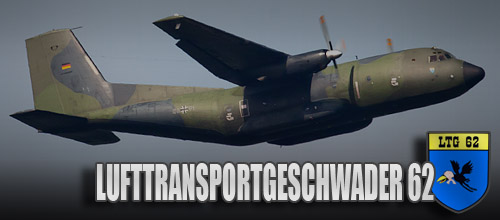
|
|
|
|
|
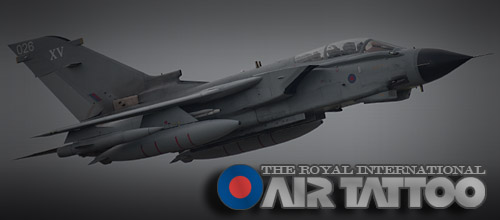
|
|
The Royal International Air Tattoo, part 1
Skylift at the RIAT 2012; RAF Fairford, July 8 – 9, 2012
The Royal International Air Tattoo is the largest annual military air- show in the world. This major event is held each year
at RAF Fairford in Gloucestershire, England. The theme of this year's RIAT is Skylift 2012. In addition, the Diamond Jubilee
of Queen Elizabeth II this sum- mer will also be celebrated during the RIAT. The main airbase of all transport units within
the Royal Air Force is RAF Brize Norton. This transport base is located on the border of the County of Oxfordshire in
southern England. RAF Brize-Norton was founded in 1937.
|
|
|
|
|
The Royal International Air Tattoo, part 2
The RAF Transport Fleet; RAF Fairford, July 8 – 9, 2012
The theme Skylift during the RIAT was symbolized with a flight pass of transport planes during the airshow. All British
transport aircraft were represented during this flight pass. The British air transport fleet, consists of; the C-130
Hercules, the C-17 Globemaster III and will be expanded in the future with the Airbus A400. The transport fleet plays a
key role within the current RAF. Nowadays it is vital to move equipment and personnel as soon as possible to crisis areas.
With a wide range of aircraft, it can make flights to every place at any time in the world.
|
|
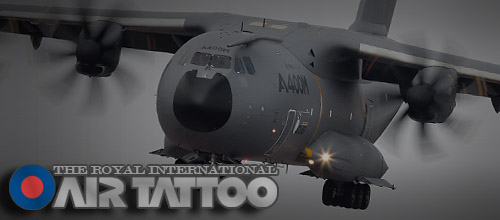
|
|
|
|
|
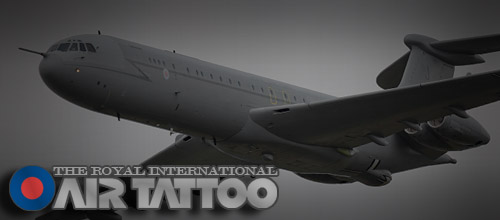
|
|
The Royal International Air Tattoo, part 3
The RAF Tanker Fleet; RAF Fairford, July 8 – 9, 2012
Besides the transport aircraft, the British tankers were also present at the Skylift flight pass. The RAF has currently 2
types of tankers in service, namely; the Tristar and the VC10. Both aircraft will be replaced by the Airbus A330 Voyager
in the future. This type of tanker was also present at the RIAT 2012.The strategic tankers are important for the long-distance
missions of the RAF. This group of planes provides the support for the other units of the RAF. The main task of the tanker
fleet is the refueling of aircraft, but also transport tasks are carried out.
|
|
|
|
|
Jagdbombergeschwader 33
Fighter-Bombers with a Mission; Büchel, July 12, 2012
On Thursday, July 12, 2012, a visit to Büchel Air Base was on the pro- gram. Jagdbombergeschwader 33 (Fighter-Bomber
Squadron 33) is stationed at this airbase. This unit is currently equipped with the Tor- nado IDS. The Tornado’s of
this unit can be used for both conventional and nuclear bombardments. Germany is from origin not a nuclear power when
it comes to weapons. Besides the nuclear powers, there are some countries in Europe which can use nuclear weapons when
needed. Germany is one of these European countries.
|
|
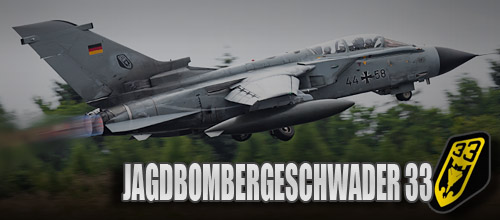
|
|
|
|
|
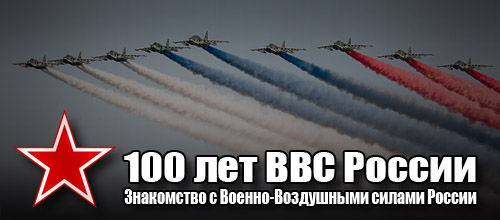
|
|
Introduction with the Russian VVS
100 Years VVS, part 1; Zhukovskiy, August 10-12, 2012
The Russian Air Force was in the period of the Soviet Union one of the strongest air forces in the world. The Russian
Air Force VVS was com- pletely destroyed after the fall of the Soviet Union. Now, 20 years later, the Russian VVS is
developing itself into a modern company after the necessary reorganizations. The highlighted era of the Russian Air
For- ce was the Cold War. The Soviet Union was together with the United States a superpower in the world. At its peak,
the Soviet Air Force had more than 10,000 fighter planes in its orbat ready for action.
|
|
|
|
|
Defending the Russian Airspace
100 Years VVS, part 2; Zhukovskiy, August 10-12, 2012
The task of the aerial defense in Russia is performed by 3 types of aircraft. The MiG-29 Fulcrum is employed for the
aerial defense on short ranges and the Su-27 Flanker is in service for the aerial defense at medium ranges. The MiG-31
Foxhound is operating as the long-range interceptor aircraft of the Russian VVS. The Russian fighter pla- nes play an
important role when it comes to the defense of the Rus- sian airspace. The fighters are in Russian called Istrebitel
(истре- битель). Istrebitel means in Russian fighter or jetfighter.
|
|
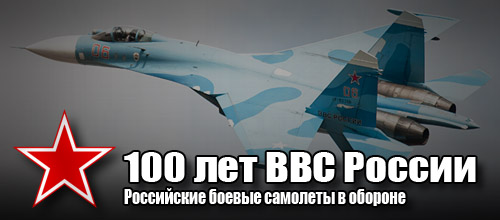
|
|
|
|
|
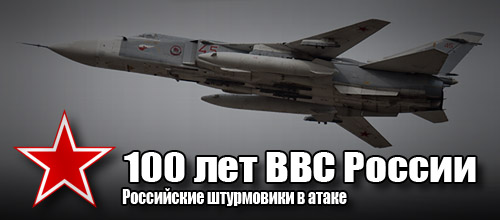
|
|
Fighter-Bombers on the Run
100 Years VVS, part 3; Zhukovskiy, August 10-12, 2012
The Russian attack planes play an important role within the VVS. The attack planes are deployed in the offensive role.
The Russian assault fleet was also represented with all operational types during the flight pass at Zhukovskiy. These
types, are; the Su-24 Fencer, the Su-25 Frogfoot and the Su-34 Fullback. The group of attack aircraft is called in
Russian Shturmoviki (Штурмовики). The word Shturmoviki means fighter-bomber or attack plane. The primary role of the
Russian fighter-bombers is attacking ground targets like buildings and bridges.
|
|
|
|
|
Intercepting the Mighty Bear
100 Years VVS, part 4; Zhukovskiy, August 10-12, 2012
The Russian bombers were for many years a real plague for the air defense units of many NATO countries. The strategic
bombers which crossed the oceans were intercepted when they flew along the NATO borders. The Russian Air Force operates
3 types of bombers, namely; Tu-22 Backfire, the T-95 Bear and Tu-160 Blackjack. The Russian bombers played the most
important role in the cat and mouse game during the Cold War. Especially the Tu-95 Bear was regularly inter- cepted
above the oceans around Europe and the United States.
|
|
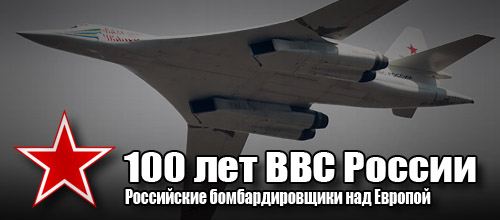
|
|
|
|
|
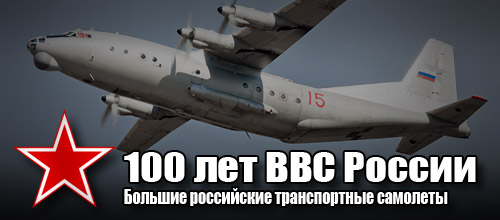
|
|
The Giants of Antonov and Ilyoshin
100 Years VVS, part 5; Zhukovskiy, August 10-12, 2012
The gigantic transport planes of the Ukrainian Antonov design bureau and the Russian Ilyoshin design bureau play an important
role in the Russian strategic transport fleet. The massive transport planes can simply perform their tasks under the harsh
Russian conditions in the vast country. The Antonov An-12 (Антонов Ан-12) is a medium-weight transport aircraft of the VVS.
The Antonov An-22 Antei (Антонов Ан-22 Антей), the Antonov An-124 Ruslan (Антонов Ан Руслан-124) and the Ilyoshin Il-76
(Ильюшин Ил-76) are big strategic transport planes.
|
|
|
|
|
Controlling the National Airspace
100 Years VVS, part 6; Zhukovskiy, August 10-12, 2012
The Russian VVS has several support aircraft in service, such as; trai- ners, flying radar stations and flying command
post. The most impor- tant aircraft of this group are planes like the L-39 Albatross, Tu-134 Crusty, A-50 Mainstay and
Il-86 Camber. All these planes flew along during the flight pass at Zhukovskiy. The Beriev A-50 Szmiel (Бериев Шмель
A-50) is a Russian Early Warning platform and the Ilyoshin Il-86 (Ильюшин Ил-86) is a flying command post. The Tupolev
Tu-134 (Туполев Ту-134) and the L-39 Albatross are used for training.
|
|
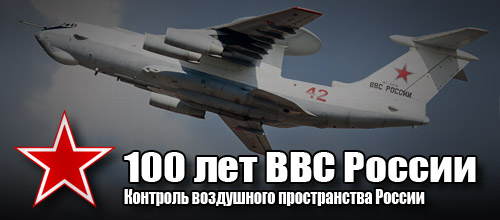
|
|
|
|
|
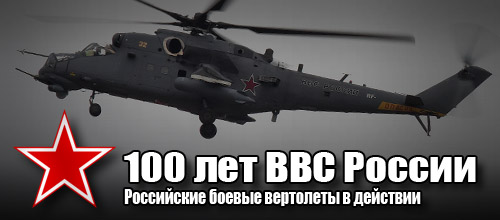
|
|
Attack Helicopters in Action
100 Years VVS, part 7; Zhukovskiy, August 10-12, 2012
The attack helicopters have an important role within the VVS. In the past, the importance of strong attack helicopters was
demonstrated during the Afghanistan War. The VVS has 3 types of attack helicopters in its orbat, namely; the Kamov Ka-52
Alligator or Hokum B, the Mil Mi-24 Hind and the Mil Mi-28 Havoc. The Russian attack helicopters are frequently used in
the past during various armed conflicts. Particularly in Afghanistan, the helicopters played an important role. The war
be- tween the Soviet Union and Afghanistan lasted from 1979 to 1989.
|
|
|
|
|
Transport under Harsh Conditions
100 Years VVS, part 8; Zhukovskiy, August 10-12, 2012
The Russian transport helicopters and light transport aircraft are very ruggedly constructed to operate under the
sometimes harsh weather conditions in Russia. The helicopters are especially in the far north of the country and in
Siberia very important. The helicopters supply these sometimes very remote areas. The Antonov An-2 (Антонов Ан-2) is
a biplane which is used for light transport tasks in harsh areas. The Mil Mi-2 (Миль Ми-2), the Mil Mi-8 and Mil Mi-17
(Миль Ми-8, Миль Ми-17) and the Mil Mi-26 (Миль Ми-26) are the primairy Russian helicopters.
|
|
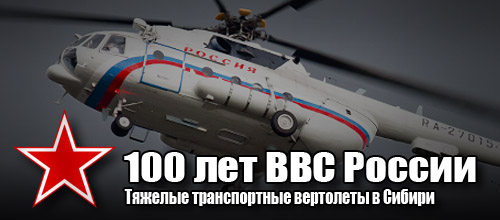
|
|
|
|
|
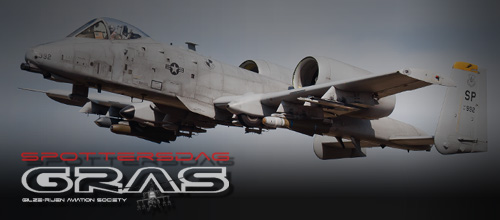
|
|
Spotter Day Gilze-Rijen Air Base
Gilze-Rijen Aviation Society; Gilze-Rijen, August 29, 2012
The nowadays annual spotter day at Gilze-Rijen took place on Wed- nesday, August 29, 2012. This spotter day is organized
by the Gilze-Rijen Aviation Society in collaboration with the Royal Netherlands Air Force. Several aircraft from the
Netherlands and abroad will visit the airbase during this day to make several touch and go’s. The spotters are able to
capture these planes ans helicopters from a close distance. The aircraft are all busy with their regular exercises in
the airspace above the Netherlands, or they a busy with a navigation trip.
|
|
|
|
|
A Rich Past with Big Scars
The Serbian Air Force, part 1; Batajnica, September 1 -2, 2012
This year, the Serbian Air Force was celebrating its 100th anniversary. Through the years, the Serbian Air Force was
also a part of the former Yugoslavian Air Force. To celebrate the 100th anniversary, the Air Force of Serbia organized
a big airshow. This airshow was held at Batajnica Air Base near Belgrade. The contemporary Serbian Air Force also known
as Ваздухопловство и противваздушна одбрана (Ser- bian Air Force and Air Defense), was founded in 1912. The Serbian Air
Force was a part of the air force of the Yugoslav Kingdom.
|
|
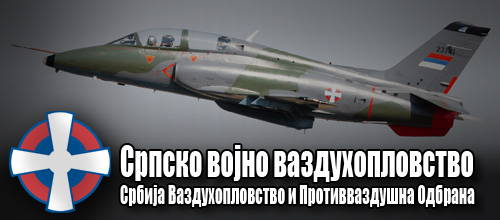
|
|
|
|
|
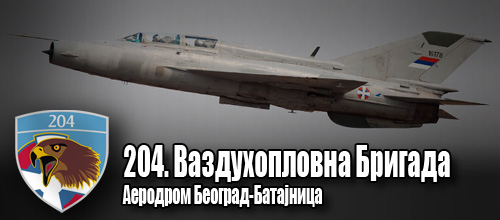
|
|
204. Vazduhoplovna Brigada
The Serbian Air Force, part 2; Batajnica, September 1 -2, 2012
The Serbian airbase Beograd-Batajnica is the home base of the 204.Brigada of the Serbian Air Force. This unit contains
the air defen- se fleet, the transport fleet and the training fleet. The 204.Brigada is the largest brigade of the 2 air
brigades in Serbia. The unit is divided into 4 squadrons with their own tasks. These 4 operational units, are; the 101.LAE,
101st Fighter Squadron, the 252.STAE, 252nd Training Squadron, the 138.MTAE, 138th Mixed Aviation Transport Squadron and
the 890.MHE, 890th Mixed Helicopter Squadron.
|
|
|
|
|
98. Vazduhoplovna Brigada
The Serbian Air Force, part 3; Batajnica, September 1 -2, 2012
The Serbian airbase Kraljevo-Lađevci is home to the 98.Brigada of the Serbian Air Force. There are 3 units based at this
airbase which flies different variants of the J-22 Orao and the SA341 and SA342 Gazelle. There are also several detachments
of the 98. Brigada based at the airbase of Niš-Konstantin Veliki. The 241.LBAE is the only unit in Serbia which still flies
the J-22 Orao. The 714.POHE is the only heli- copter squadron in Serbia which focuses entirely on the offensive role. The
119.MHE is the second helicopter unit of the 98.Brigada.
|
|
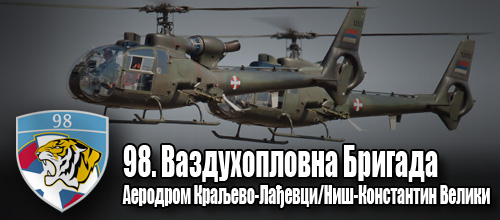
|
|
|
|
|
<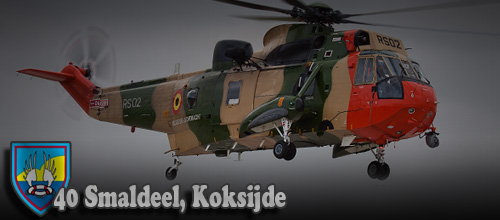
|
|
The Belgian SAR Flight
The Sea-Kings of the no 40 Squadron; Koksijde, September 10, 2012
The Belgian SAR flight at Koksijde Air Base is flying for years with the Westland Sea-King Mk48. The helicopters are
mainly used for search and rescue flights at sea, but also civilian tasks are performed by the no 40 Squadron. After
35 years of service, the Sea-King will finally be replaced by the NH-90. The Belgian airbase Koksijde is located in the
south western part of Belgium on the coast line next to the city of Ostend. Koksijde Air Base was founded during the
First World War by the Belgians after the German invasion of August 2, 1914.
|
|
|
|
|
Italians are Practicing in Belgium
Helicopters of the Italian Army; Kleine-Brogel, September 18, 2012
On Tuesday, September 18th, four Italian helicopters arrived at the Belgian air base Kleine-Brogel. The formation consisted of two CH-47C Chinook transport helicopters and two Augusta A129 Mangusta attack helicopters. The helicopters were from the Italian airbase Viterbo which is located near the city of Rome. The helicopters at this airbase are all part of the first army aviation regiment of the Italian Army (1°Reggimento dell'Aviazione dell'Esercito 'Antares'). Besides the Italians, Belgians and Germans were present at Kleine-Brogel.
|
|
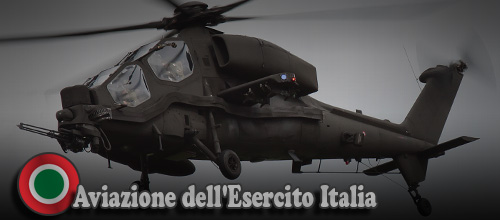
|
|
|
|
|
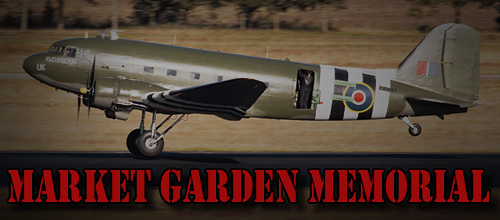
|
|
Para Troopers at Eindhoven Air Base
Market Garden Memorial; Eindhoven, September 21 & 22, 2012
Operation Market garden took place in the period from September 17, 1944 until September 25, 1944. The aim of the operation
was to cap- ture all the bridges on the route from Eindhoven to Arnhem in the Netherlands to defeat all the German forces in
the country. The mis- sion failed in Arnhem and led to a bloody battle. The result of this failure was the famine in the
northern part of the Netherlands. The major aircraft during Operations Market Garden was the Douglas
C-47 Skytrain which was the military version of the Douglas DC-3 Dakota.
|
|
|
|
|
Brabants Bont
F-16 at the Parallel Runway; Volkel, September 25, 2012
On Tuesday, September 25, I had a visit at Volkel Air Base. The F-16s were due to maintenance of the main runway
temporarily flying from the parallel runway. This is an ideal situation for spectacular action shots of the departing
F-16s. There were only 4 aircraft planned for flight this afternoon. Also we were positioned at an unfortunate location
along the runway; the F-16's were already pretty high when they passed us. Luckily I managed to capture a few nice photos
of the departing F-16s. The aircraft stayed away for over 1.5 hours.
|
|
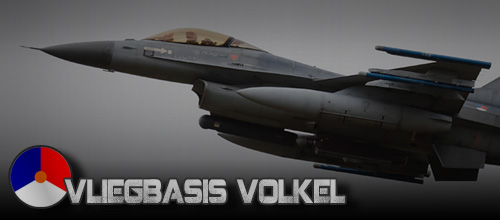
|
|
|
|
|
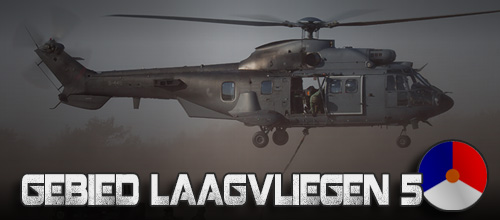
|
|
Gebied Laagvliegen 5; Oirschotse heide, 2012
Helicopters at GLV5; Text and Photograph's by Alex van Noye
In 2012 I visited the Oirschotse Heide in total of 2 times. This area is known for its excellent photo- graphy opportunities.
At the beginning of February, I managed to capture a Cougar in the snow. This was the first time I managed to take pictures
on the Oirschotse Heide in winter conditions. The second time I was on the heath was at the end of September. The visitor
which I photographed during this visit was very special. At the end of the afternoon I captured an American UH-60 Blackhawk
from Landstuhl in Germany.
|
|
|
|
|
Mikoyan-Gurevic MiG-21 Fishbed
The Bulgarian MiGs, part 1; Graf-Ignatievo, October 5, 2012
The MiG-21 is without doubt the most successful aircraft ever in use within the Bulgarian Air Force. The aircraft has
also the longest operational record of all the fighters of the Bulgarian Air Force. The last Bulgarian MiG-21s will be
phased out after 50 years of operational service at the end of the year 2012. The Mikoyan-Gurevich MiG-21 (Микоян и
Гуревич МиГ-21) is a supersonic fighter built in the Soviet Union. The NATO code name for this fighter is Fishbed;
the two-seater variants are called Mongol. The aircraft is also known as the Balalaika.
|
|
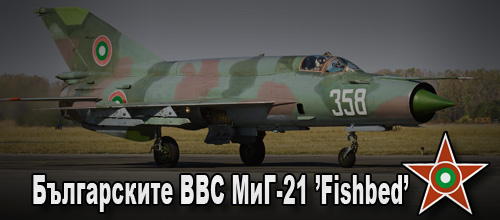
|
|
|
|
|
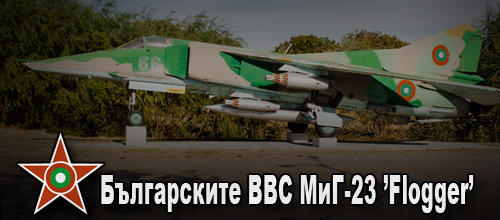
|
|
Mikoyan-Gurevic MiG-23 Flogger
The Bulgarian MiGs, part 2; Graf-Ignatievo, October 6, 2012
Also the MiG-23 “Flogger” played an important role besides the MiG-21 “Fishbed” in Bulgaria. The MiG-23 entered service
as an air defen- se fighter at Dobroslavtsi Air Base and Gabrovnitsa Air Base at the end of the 70. The MiG-23 was also used
as a fighter bomber at Cheshnegirovo Air Base at the beginning of the 80s. The Mikoyan-Gurevich MiG-23 (Микоян и Гуревич
МиГ-23) is a fighter which was built by the Soviet Union. The NATO code name for this supersonic fighter is Flogger. Series
production was started in December 1967.
|
|
|
|
|
Mikoyan-Gurevic MiG-29 Fulcrum
The Bulgarian MiGs, part 3; Graf-Ignatievo, October 7, 2012
The main fighter within the current Bulgarian Air Force is without no doubt the MiG-29 Fulcrum. The aircraft entered service
at the Bulga- rian Air Force in 1989. The MiG-29 made an excellent in the role of air dominance fighter; the aircraft played
also an important role as an escort fighter for the vulnerable fighter bombers. The Mikoyan Gurevich MiG-29 (Микоян и
Гуревич МиГ-29) is a fourth-generation fighter which was developed as a short range superiority fighter by the Soviet Union.
The NATO code name for the MiG-29 is Fulcrum.
|
|
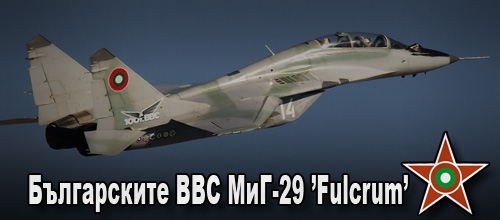
|
|
|
|

|







